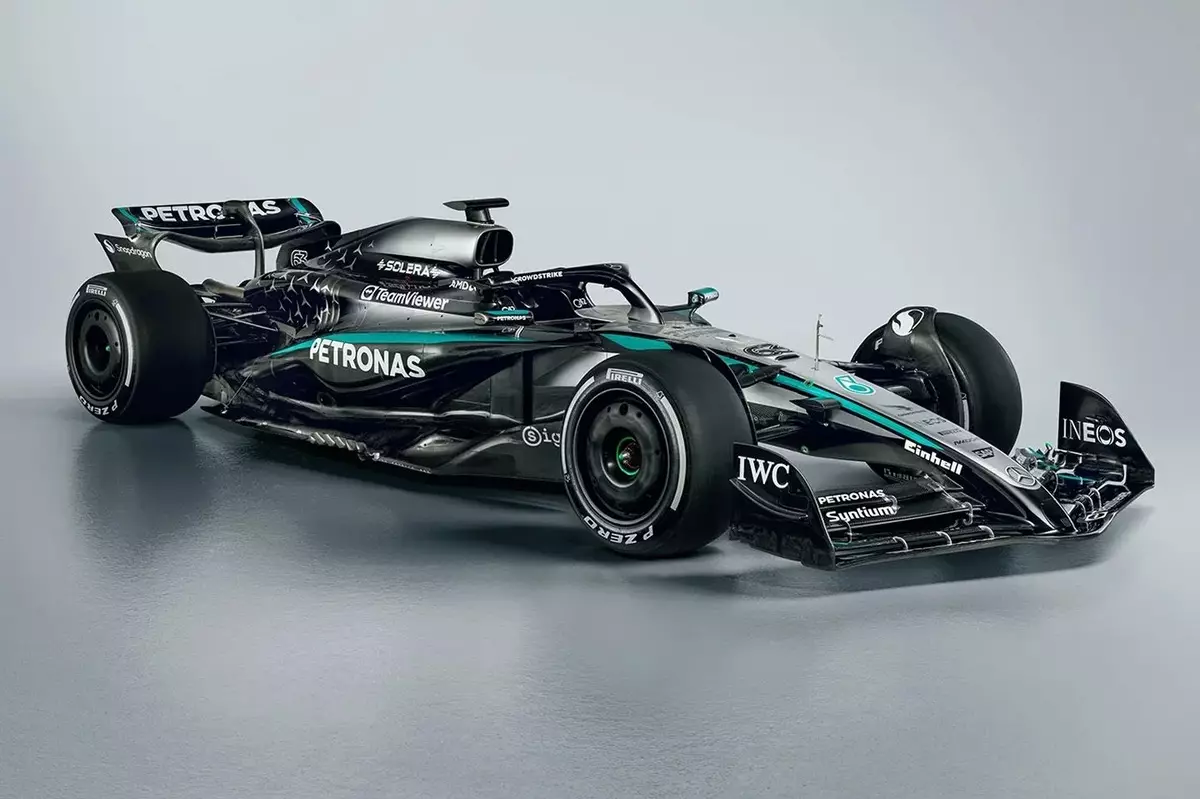The unveiling of the Mercedes W16 marks a pivotal moment for the Formula 1 team as they prepare for the 2025 season. This new car represents not just an evolution of design but a strategic shift aimed at rectifying the challenges posed by its predecessor, the W15. After revealing its livery at the recent F175 launch event in London, Mercedes has made the W16 official, showcasing a vehicle designed to tackle previous aerodynamic shortcomings. George Russell and the talented newcomer Andrea Kimi Antonelli will be at the helm, with Antonelli set to become the youngest driver in Mercedes history.
Learning from the Past
The development of the W16 comes in the wake of varied performance from the W15 in the previous season. Although Russell and veteran Lewis Hamilton secured two wins each in 2024, including a dominant showing at the Las Vegas Grand Prix, the overall campaign was marred by inconsistencies. The team ended the season in fourth place in the constructors’ championship, behind rivals McLaren, Ferrari, and Red Bull. This pattern of fluctuation in performance, especially in terms of circuit adaptability, has fueled the design overhaul seen in the W16.
Mercedes’ drive to revisit the fundamentals is deeply rooted in the goal of achieving a more stable car setup. As technical director James Allison highlights, the team has reconfigured “every aerodynamic surface” and introduced a completely new front suspension. This systematic approach aims to address the W15’s notorious difficulties, particularly its reluctance to navigate slow corners and the imbalances in tire temperatures. These issues often left drivers frustrated, contributing to the overall decline in competitive standing. Now, with enhanced aerodynamics, the W16 looks to build a more reliable racing platform.
With Hamilton’s transition to Ferrari, Russell has stepped into the role of primary driver, bringing with him a sense of responsibility and leadership. The departure of such an iconic figure presents both challenges and opportunities for Russell, who is determined to guide the team in a positive direction. Meanwhile, the inclusion of a highly skilled but young talent like Antonelli may introduce fresh energy and perspectives, potentially reshaping the team dynamic.
As the team gears up for the upcoming season, it is clear that preparation will be critical. Russell noted the importance of disciplined changes, emphasizing thorough improvements to avoid previous pitfalls. The team’s first testing offer will be conducted at the Bahrain International Circuit, allowing them to gauge the performance of the W16 during a filmed day. The pre-season tests scheduled for late February will provide an essential environment to compare how well the updates translate into speed and performance on the track.
The anticipation surrounding the W16 does not solely rest on its technical capabilities but also on the strategic positioning within the competitive landscape. As teams begin to invest resources for both the 2025 and 2026 seasons, the trajectory and adaptability of the W16 will play a crucial role in determining Mercedes’ place among the elite in Formula 1. The 2025 season promises to be filled with challenges and opportunities, setting the stage for what could be a transformative year in the history of the Silver Arrows.

